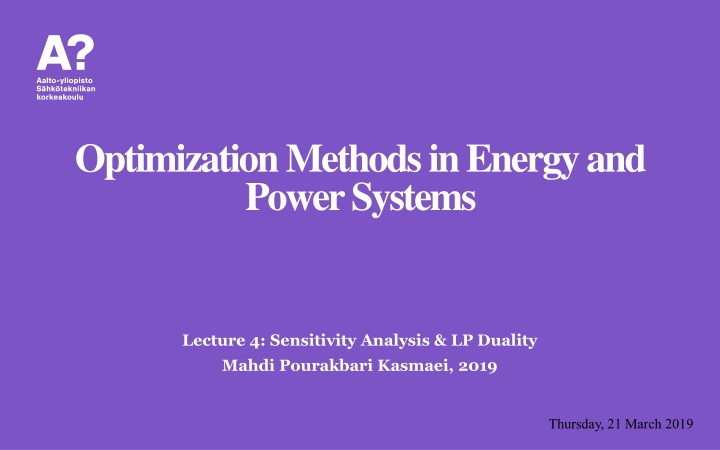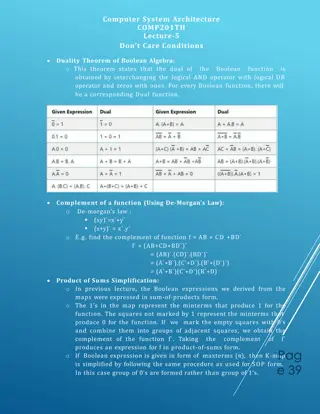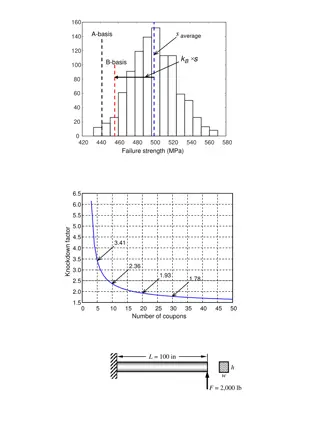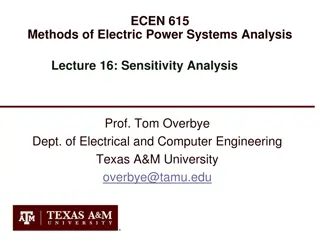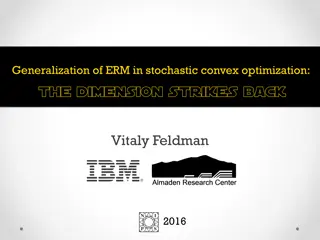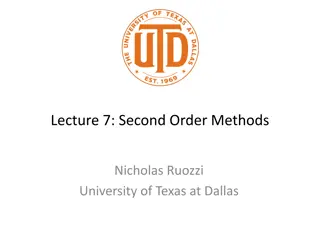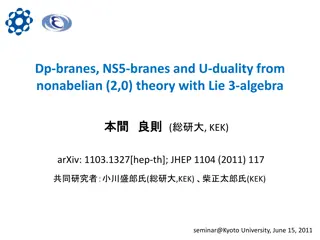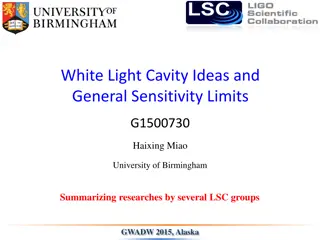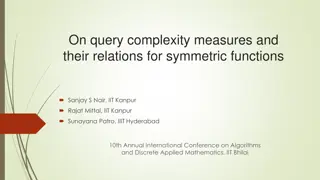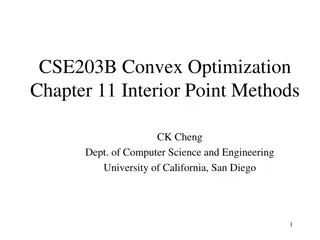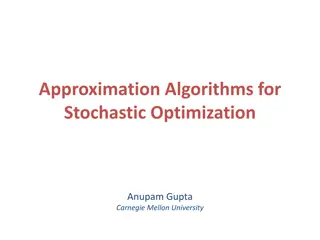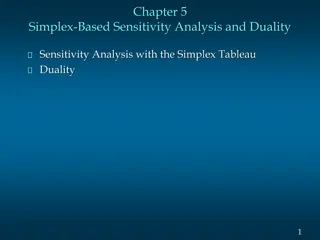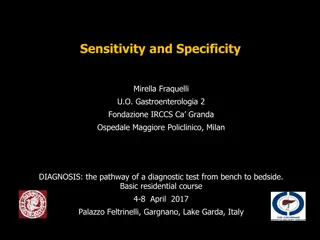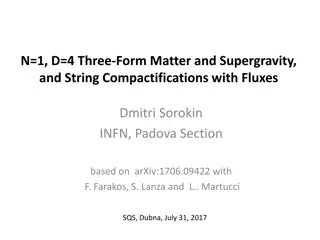Sensitivity Analysis and LP Duality in Optimization Methods
Sensitivity analysis and LP duality play crucial roles in optimization methods for energy and power systems. Marginal values, shadow prices, and reduced costs provide valuable insights into the variability of the optimal solution and the impact of changes in input data. Understanding shadow prices helps determine the effect of changing constraints on the objective function, with positive shadow prices indicating an increase and negative shadow prices indicating a decrease. Additionally, the distinction between binding and non-binding constraints is essential in optimizing LP problems. Utilizing concepts like marginal values helps in analyzing sensitivity and making informed decisions in energy and power system optimization.
Download Presentation

Please find below an Image/Link to download the presentation.
The content on the website is provided AS IS for your information and personal use only. It may not be sold, licensed, or shared on other websites without obtaining consent from the author.If you encounter any issues during the download, it is possible that the publisher has removed the file from their server.
You are allowed to download the files provided on this website for personal or commercial use, subject to the condition that they are used lawfully. All files are the property of their respective owners.
The content on the website is provided AS IS for your information and personal use only. It may not be sold, licensed, or shared on other websites without obtaining consent from the author.
E N D
Presentation Transcript
Optimization Methods in Energy and Power Systems Lecture 4: Sensitivity Analysis & LP Duality Mahdi Pourakbari Kasmaei, 2019 Thursday, 21 March 2019
LP Problems (Sensitivity Analysis & LP Duality) Marginal Values (Shadow Prices and Reduced Costs) and Sensitivity Ranges are used in conducting Sensitivity Analysis. Simplex method (used in solvers) provide extra information than the optimal solution. It provides Marginal Values. 2
LP Problems (Sensitivity Analysis) Marginal values give information on the variability of the Optimal Solution due to changes in the Input Data. Shadow Prices are associated with the right-hand side (RHS) of the constraints. Reduced Costs are associated with the basic variables and their corresponding bounds. 3
LP Problems (Sensitivity Analysis) Only use the Concepts of Marginal Values for LP Problems. 4
LP Problems (Shadow Prices) One unit change in the RHS of the constraints results in a change in the Objective Function. Positive Shadow Price means that the objective function will increase by increasing the RHS by one unit. Negative Shadow Price means the objective function will decrease by increasing the RHS by one unit. 5
LP Problems (Shadow Prices) If there exist non-binding constraints in the LP problem, changing the RHS results in no change in the Objective Function. The Shadow Price is Zero. Binding Constraints!?? Those constraint that restrict the optimal solution; Intersected Lines. Non-Binding Constraints!?? Those constraint that are not affecting the Optimal Solution. 6
LP Problems (Shadow Prices) 2 1 m in x x = + z x x 1 2 , s = + 1 2 .t 2 1 z x x Non-binding Constraint 1 2 . + 1 2 3 2 1 1 x x 1 62 x x 1 2 + 1 68 x x 1 2 + 0.3 50 4 0 5 0 x x x x 1 2 1 2 , 0 1 2 7
LP Problems (Shadow Prices) Binding or Non-Binding Constraints Could become Non-Binding or Binding ones as data Change. 8
LP Problems (Shadow Prices) How we can take the advantage of Shadow Prices?! To objective function is improved by weakening (relaxing) the binding constraint, i.e., enlarging the feasible region. Improving for Minimization and Maximization problems mean decreases and increases the RHS, respectively. 9
LP Problems (Shadow Prices) Enlarging the feasible region happens by changing the RHS; for constraint, the RHS should be decreased while for constraint, the RHS should be increased. Therefore, the signs of the Shadow Prices for binding inequality constraints of the form and are opposite. 10
LP Problems (Shadow Prices) As discussed, any Equality Constraint can be transformed into two inequality constraints; in this case, at most one of them will have a nonzero Shadow Price. 11
Solving LP Problems (Shadow Prices) Sign of the Shadow Price can be used to infer the sign of the binding constraint: Considering a Minimization Problem, if the Shadow Price of a binding Equality Constraint is Negative, it means that the Objective Function will decrease (improve) if the RHS increases. 12
LP Problems (Shadow Prices) VARIABLES Z; POSITIVE VARIABLES x1, x2; EQUATIONS EqObj, Eq1, Eq2, Eq3, Eq4, Eq5; EqObj.. z =e= 2*x1 + x2; Eq1.. x1 + x2 =g= 62; Eq2.. (2/3)*x1 + x2 =l= 68; Eq3.. 2*x1 + 0.3*x2 =g= 50; Eq4.. x1 =l= 50; Eq5.. x2 =l= 40; MODEL LP_ED /ALL/; Solve LP_ED using LP Minimizing Z; Example 4.1 = + m x x in 2 1 z x x 1 2 , s 1 2 .t . LOWER LEVEL UPPER MARGINAL ---- VAR Z -INF 84.000 +INF . ---- VAR x1 . 22.000 +INF . ---- VAR x2 . 40.000 +INF . + 1 2 3 2 1 1 x x 1 62 x x 1 2 + 1 68 x x 1 2 LOWER LEVEL UPPER MARGINAL + 0.3 50 4 0 5 0 x x x x ---- EQU Eq1 62.000 62.000 +INF 2.000 ---- EQU Eq2 -INF 54.667 68.000 0.000 ---- EQU Eq3 50.000 56.000 +INF 0.000 ---- EQU Eq4 -INF 22.000 50.000 0.000 ---- EQU Eq5 -INF 40.000 40.000 -1.000 1 2 1 2 , 0 1 2 13
LP Problems (Shadow Prices) LOWER LEVEL UPPER MARGINAL ---- EQU Eq1 62.000 62.000 +INF 2.000 ---- EQU Eq2 -INF 54.667 68.000 0.000 ---- EQU Eq3 50.000 56.000 +INF 0.000 ---- EQU Eq4 -INF 22.000 50.000 0.000 ---- EQU Eq5 -INF 40.000 40.000 -1.000 Example 4.1 = + 2 1 z x x 1 2 = + m x x in 2 1 z x x 1 2 , s 1 2 .t . Moving up enlarges the Feasible Region + 1 2 3 2 1 1 x x 1 62 x x 1 2 + 1 68 x x 1 2 Moving up tightens the Feasible Region + 0.3 50 4 0 5 0 x x x x 1 2 1 2 , 0 1 2 14
LP Problems (Shadow Prices) Sufficiently Small Changes in the RHS of Non- binding Constraints has no effect on the Objective Function, while a sufficiently small change in the RHS of Binding Constraints results in a change in the Objective Function. Big Changes may change the nature of Binding and Non-Binding Constraints. 15
LP Problems (Shadow Prices) LOWER LEVEL UPPER MARGINAL ---- EQU Eq1 62.000 62.000 +INF 2.000 ---- EQU Eq2 -INF 54.667 68.000 0.000 ---- EQU Eq3 50.000 56.000 +INF 0.000 ---- EQU Eq4 -INF 22.000 50.000 0.000 ---- EQU Eq5 -INF 40.000 40.000 -1.000 Let us change the RHSs. Example 4.2 = + min x x 2 1 z x x 1 2 , s.t. VARIABLES Z; POSITIVE VARIABLES x1, x2; EQUATIONS EqObj, Eq1, Eq2, Eq3, Eq4, Eq5; EqObj.. z =e= 2*x1 + x2; Eq1.. x1 + x2 =g= 63; Eq2.. (2/3)*x1 + x2 =l= 68; Eq3.. 2*x1 + 0.3*x2 =g= 50; Eq4.. x1 =l= 50; Eq5.. x2 =l= 40; MODEL LP_ED /ALL/; Solve LP_ED using LP Minimizing Z; 1 2 + + 1 2 3 2 1 1 x x 1 62 1 x x 1 2 84 + 2 + 1 68 x x 1 2 + 0.3 50 40 50 x x x x 1 2 1 ---- VAR Z ---- VAR x1 ---- VAR x2 LOWER -INF . . LEVEL UPPER MARGINAL 86.000 +INF 23.000 +INF . 40.000 +INF . . 2 , 0 1 2 16
LP Problems (Shadow Prices) LOWER LEVEL UPPER MARGINAL ---- EQU Eq1 62.000 62.000 +INF 2.000 ---- EQU Eq2 -INF 54.667 68.000 0.000 ---- EQU Eq3 50.000 56.000 +INF 0.000 ---- EQU Eq4 -INF 22.000 50.000 0.000 ---- EQU Eq5 -INF 40.000 40.000 -1.000 Let us change the RHSs. Example 4.3 = + min x x 2 1 z x x 1 2 , s.t. VARIABLES Z; POSITIVE VARIABLES x1, x2; EQUATIONS EqObj, Eq1, Eq2, Eq3, Eq4, Eq5; EqObj.. z =e= 2*x1 + x2; Eq1.. x1 + x2 =g= 62; Eq2.. (2/3)*x1 + x2 =l= 68; Eq3.. 2*x1 + 0.3*x2 =g= 50; Eq4.. x1 =l= 50; Eq5.. x2 =l= 41; MODEL LP_ED /ALL/; Solve LP_ED using LP Minimizing Z; 1 2 + 1 2 3 2 1 1 x x 1 62 x x 1 2 84 - 1 + 1 68 x x 1 2 + 0.3 50 4 0 50 x x x x 1 2 1 + ---- VAR Z ---- VAR x1 ---- VAR x2 LOWER -INF . . LEVEL UPPER MARGINAL 83.000 +INF 21.000 +INF . 41.000 +INF . 1 . 2 , 0 1 2 17
LP Problems (Shadow Prices) LOWER LEVEL UPPER MARGINAL ---- EQU Eq1 62.000 62.000 +INF 2.000 ---- EQU Eq2 -INF 54.667 68.000 0.000 ---- EQU Eq3 50.000 56.000 +INF 0.000 ---- EQU Eq4 -INF 22.000 50.000 0.000 ---- EQU Eq5 -INF 40.000 40.000 -1.000 Let us change the RHSs. Example 4.4 = + min x x 2 1 z x x 1 2 , s.t. VARIABLES Z; POSITIVE VARIABLES x1, x2; EQUATIONS EqObj, Eq1, Eq2, Eq3, Eq4, Eq5; EqObj.. z =e= 2*x1 + x2; Eq1.. x1 + x2 =g= 62; Eq2.. (2/3)*x1 + x2 =l= 68; Eq3.. 2*x1 + 0.3*x2 =g= 50; Eq4.. x1 =l= 51; Eq5.. x2 =l= 40; MODEL LP_ED /ALL/; Solve LP_ED using LP Minimizing Z; 1 2 + 1 2 3 2 1 1 x x 1 62 x x 1 2 84 + 0 + 1 68 x x 1 2 + + 0.3 50 40 50 1 x x x x 1 2 1 ---- VAR Z ---- VAR x1 ---- VAR x2 LOWER -INF . . LEVEL UPPER MARGINAL 84.000 +INF 22.000 +INF . 40.000 +INF . . 2 , 0 1 2 18
LP Problems (Reduced Costs) The Marginal Value corresponds to a decision variable is interpreted as its Reduced Cost. Reduced Cost stand for the rate of change of the Objective Function for one unit increase in the Bound of a Variable. 19
LP Problems (Reduced Costs) If a non-basic variable has a Positive Reduced Cost, the Objective Function will increase with a one unit increase in the binding bound, while if a non-basic variable has a Negative Reduced Cost, the Objective Function will decrease. The Reduced Cost of a basic variable is Zero if its bounds are nonbinding and therefore do not constrain the optimal solution. 20
LP Problems (Reduced Costs) The Reduced Cost of a variable is non-zero if the variable is at its bound. How to define bounds in GAMS??? .LO is used to define the lower bound (x1.lo = c1) .UP is used to define the upper bound (x2.up = c2) 21
LP Problems (Shadow Prices) Let us change the RHSs. Example 4.5 = + m x x in 2 1 z x x 1 2 , s VARIABLES Z; POSITIVE VARIABLES x1, x2; EQUATIONS EqObj, Eq1, Eq2, Eq3; EqObj.. z =e= 2*x1 + x2; Eq1.. x1 + x2 =g= 62; Eq2.. (2/3)*x1 + x2 =l= 68; Eq3.. 2*x1 + 0.3*x2 =g= 50; x1.up = 50; X2.up = 40; MODEL LP_ED /ALL/; Solve LP_ED using LP Minimizing Z; 1 2 .t . + 1 2 3 2 1 1 x x 1 62 x x 1 2 + 1 68 x x 1 2 + 0.3 50 4 0 5 0 x x x x 1 2 1 ---- VAR Z ---- VAR x1 ---- VAR x2 LOWER -INF . . LEVEL UPPER MARGINAL 84.000 +INF 22.000 50 . 40.000 40 -1.00 . 2 , 0 1 2 22
LP Problems (Shadow Prices) LOWER -INF . . LEVEL UPPER MARGINAL 84.000 +INF 22.000 50 . 40.000 40 -1.00 Let us change the RHSs. ---- VAR Z ---- VAR x1 ---- VAR x2 . Example 4.6 = + min x x 2 1 z x x 1 2 , s.t. VARIABLES Z; POSITIVE VARIABLES x1, x2; EQUATIONS EqObj, Eq1, Eq2, Eq3; EqObj.. z =e= 2*x1 + x2; Eq1.. x1 + x2 =g= 62; Eq2.. (2/3)*x1 + x2 =l= 68; Eq3.. 2*x1 + 0.3*x2 =g= 50; x1.up = 50; X2.up = 41; MODEL LP_ED /ALL/; Solve LP_ED using LP Minimizing Z; 1 2 + 1 2 3 2 1 1 x x 1 62 x x 1 2 84 - 1 + 1 68 x x 1 2 + 0.3 50 4 0 50 x x x x 1 2 1 + ---- VAR Z ---- VAR x1 ---- VAR x2 LOWER -INF . . LEVEL UPPER MARGINAL 83.000 +INF 22.000 50 . 40.000 40 -1.00 1 . 2 , 0 1 2 23
LP Problems (Reduced Costs) In Minimization Problem it is favorable to have a variable with Negative Reduced Cost. In Maximization Problem, it is favorable to have a variable with Positive Reduced Cost. 24
LP Problems (Sensitivity Analysis) Analysis based on Marginal Values are only Valid for Small Changes. 25
LP Problems (Sensitivity Ranges) Sensitivity Function Value. Ranges with constant Objective Ranges of Decision Variables under this condition depends on the Objective Function. It can be a unique Optimal Point, or it can be a range of variables corresponding to the Optimal Solution. 26
LP Problems (Sensitivity Ranges) For the red Objective Function, unique points exist, however for the green Objective Contour, the ranges of variables are as follows: ?2=[12, 40] ?1=[22, 50] 27
LP Problems (Sensitivity Ranges) Sensitivity ranges with Constant Basis. Ranges of the Objective Function is determined by changing the slope of Objective Function until the Optimal Solution Changes (It converges to another Extreme Point) 28
LP Problems (Sensitivity Ranges) The Objective Function. ranges of ?2=[12, 40] ?1=[22, 50] 29
LP Problems Duality 30
LP Problems (Duality in Canonical Form) = T = T min s.t. z c x max y z b y D P x s.t. Primal: :Dual T : Ax b x y : A y y c x 0 0 Dual Variable Primal Variable 31
LP Problems (Duality in Canonical Form) Each constraint in Primal is associated with a Variable of Dual, and each Variable of Primal is associated with a Constraint of Dual. If Primal has m constraints and n variables, Dual has m variables and n constraints. 32
LP Problems (Duality in Canonical Form) Example 4.7: Finding the Dual min 6 8 s.t. 3 5 2 , 0 x x = + = + max y 4 7 z y y z x x 1 2 D 1 2 P x s.t. + + + + 4 : 7 : x x x y y 3 1 y y 5 2 6 : 8 y y y y x x 1 2 x 1 1 2 1 : 1 2 2 1 , 2 0 2 1 2 1 2 3 1 5 3 5 1 6 8 y y 1 Note that: 6 8 or y y 1 2 2 2 2 33
LP Problems (Duality in Standard Form) = T min s.t. z c x = T max y z b y P x D Primal: :Dual s.t. = : Ax x b y T : A y c x 0 Dual Variable Primal Variable 34
LP Problems (Duality in Standard Form) Example 4.8: Finding the Dual min 6 8 s.t. 3 5 2 , , , x x x = + max y 4 7 z y y 1 2 D = + z x x s.t. 1 2 P x + + 3 1 5 2 0( 0( 6 8 : : y y y y x x x x 1 2 1 + + = 4 : 7: 0 x x x x y y 1 2 x 3 x 1 1 y y 2 2 = 0) : 0) : y y 1 2 4 2 1 1 3 x 1 2 3 4 2 2 4 4 7 1 0 3 1 5 2 0 = Note: D z y y 6 8 0 0 y y & 1 2 1 2 1 35
LP Problems (Duality in General Form) = + + = + + min s.t. z 1 1 c x 2 2 c x 3 3 c x max y z 1 1 yb 2 2 y b 3 3 y b P D x s.t. + + + + + + + + : 11 1 a y a y a y y y y a y a y a y 31 3 a y a y a y c x c c : 11 1 a x a x a x x x x 12 2 a x a x a x 13 3 a x a x a x b b b y y y 21 2 1 1 x x 1 1 Primal : : : : Dual 12 1 22 2 32 3 2 2 21 1 22 2 23 3 2 2 + + = + + = 13 1 23 2 33 3 3 3 31 1 32 2 33 3 3 3 0 0 free 0 0 free 1 1 2 2 3 3 36
LP Problems (Duality in General Form) How to obtain the Dual of a Problem in General Form? Step 1: Transform the Problem in Canonical Form of a Minimization Problem. Step 2: Obtain the Dual of the Transformed Problem in Step 1. 37
LP Problems (Duality in General Form) The Transformation and Finding the Dual (Previous Slide). (Min Problem) ???? Constraints following relations are inferred from the (Max Problem) Constraints = Variabes = Variabes ???? 38
LP Problems (Duality in General Form) Example 4.9: Finding the Dual = min y 2 4 z y y = + m s.t. a x x 8 3 2 z x x x 1 2 D 1 2 3 P s.t. + 5 8 : y y + x x x + 6 + 2 : x x x y y 1 2 1 1 x 2 x x 3 2 0 1 6 7 3 : y y = = 5 x x free 7 4: x 1 2 0 free 2 2 1 2 3 2 2 : y y y y 0; 1 2 3 1 2 1 3 2 39
Thanks! 40
